Governing bodies stand as the guardians of integrity, equity, and progress. National and international federations hold the reins, steering the course of various disciplines toward growth, inclusivity, and excellence. The role of the federations is paramount. Tennis and Padel are distinguished racquet sports transcending boundaries, captivating audiences globally with their blend of skill, strategy, and athleticism. Yet, behind the spectacle of grand slams and international tournaments lie the concerted efforts of federations at all levels, working tirelessly to cultivate talent, expand participation, and enhance the overall experience for players and fans alike. This article explores what these federations do to help tennis and Padel develop. From getting more people involved at the grassroots level to making big decisions about how the sports are run, federations are making it happen. We’ll examine how federations make tennis and Padel more popular and enjoyable. By understanding their efforts to attract new players, make the sports fair fun, and expand them to more places, we’ll see just how important federations are in shaping the future of tennis and Padel. Structure of Federations. Several key organizations that govern sports can work internationally and nationally.
These organizations play crucial roles in shaping their respective sports’ direction, regulations, and development strategies.
International Tennis Federation (ITF)
The International Tennis Federation serves as the global governing body for tennis. It oversees various aspects of the sport, including organizing international competitions such as the Grand Slam tournaments (Wimbledon, US Open, etc.), the Davis Cup for men, and the Billie Jean King Cup for women. The ITF sets rules and regulations, promotes grassroots development, and implements anti-doping measures to ensure fair play and integrity within the sport.

World Padel Tour (WPT)
The World Padel Tour is the premier international circuit for professional padel players. It organizes tournaments worldwide, featuring top players and teams competing for prestigious titles. The WPT plays a crucial role in promoting Padel at the elite level, driving global interest, and elevating the standard of play within the sport.
International Padel Federation (FIP)
The International Padel Federation works to develop and promote Padel worldwide by establishing standards, organizing international competitions such as the World Padel Championships, and fostering collaboration among national federations to advance the sport’s growth and recognition.
Outline of national federations’ roles and alignment with international bodies
National Federations serve as the primary governing bodies for tennis and Padel within their respective countries. While they operate autonomously, national federations often align their efforts with international bodies to support the overall development and promotion of the sports.
Roles of National Federations
Grassroots development: National federations promote participation in tennis and Padel at the grassroots level. They organize youth programs, school initiatives, and community events to introduce new players to the sports and nurture talent from a young age.
Competition organization: National federations oversee the organization of domestic tournaments, leagues, and championships, providing opportunities for players of all skill levels to compete and progress within the sport.
Coaching and officiating: National federations establish coaching certification programs and officiating courses to ensure the quality and professionalism of coaches and officials within their jurisdictions.
Player development: National federations support the development of elite players by providing training facilities, coaching resources, and competition pathways to help aspiring athletes reach their full potential.
Governance and administration: National federations manage the administrative tasks related to the sport, including management, to maintain transparency and accountability within the sport’s governance structure.
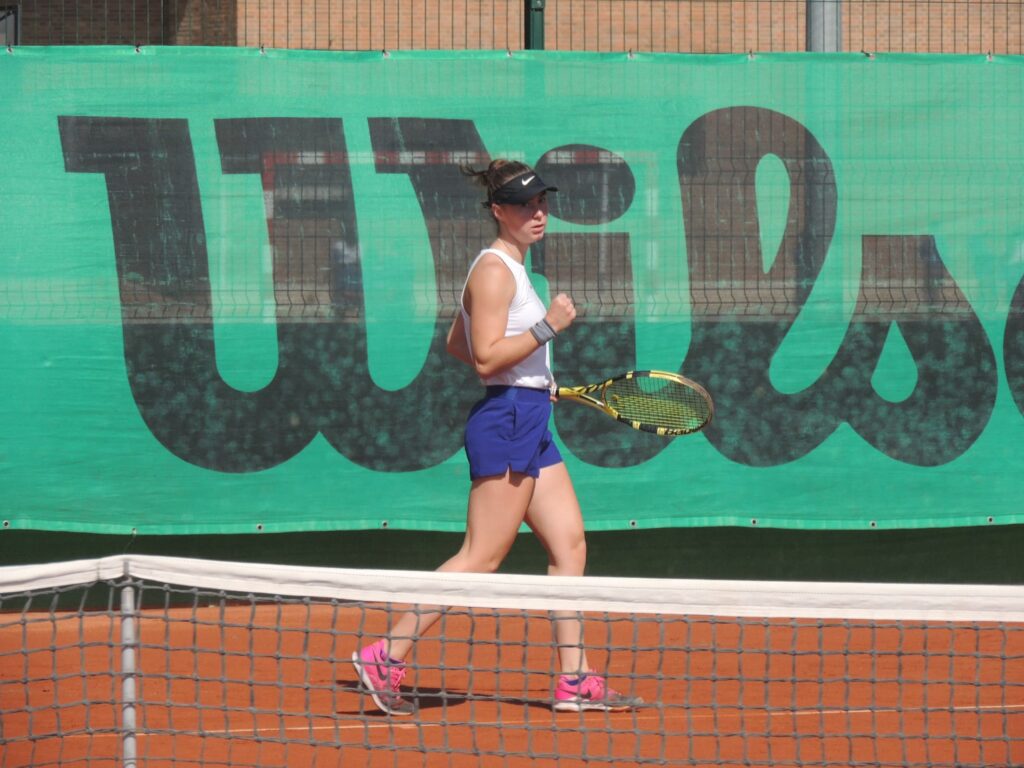
Alignment with international bodies
National federations collaborate with international bodies such as the ITF and FIP to align their development initiatives with global standards and best practices. They participate in international competitions, adhere to international regulations, and implement programs endorsed by international federations to contribute to the overall growth and success of tennis and Padel on the global stage. By working in tandem with international bodies and leveraging their local expertise and resources, national federations play a crucial role in advancing the interests of tennis and Padel at both the national and international levels, ultimately contributing to the continued evolution and popularity of the sports worldwide.
Grassroots development
The basis for the long-term expansion and appeal of sports like Padel and tennis is grassroots development. Grassroots programs are essential for acquainting new players with the sport, developing skills, and creating a desire for active engagement that lasts a lifetime. Now, let us examine several grassroots development projects, such as school clinics, youth programs, and local tournaments:
Youth Programs
Youth programs provide children and teenagers with an enjoyable and engaging atmosphere for learning tennis and Padel. These programs frequently include structured coaching sessions, skill-building activities, and interactive games catered to the participant’s age and ability level. Youth programs create the foundation for future involvement and talent development by giving young athletes a chance to learn the principles of the sport and hone their skills over time.
• Youth programs serve as entry points for children to experience the joys of playing tennis and Padel, fostering a love for the sport from an early age.
• Structured coaching and skill-building activities help participants develop essential motor skills. Hand-eye coordination and teamwork abilities contribute to their overall physical and social development.
• Youth programs cater to the diverse needs and interests of young participants by offering a variety of age-appropriate activities and formats, ensuring an inclusive and enjoyable experience for all.

School Clinics
Tennis and padel federations can work with educational institutions to introduce students to the sports through organized coaching sessions and hands-on displays at school clinics. These clinics allow students to learn and practice the foundations of tennis and Padel in an educational atmosphere. They can be offered as extracurricular activities or integrated into physical education curricula.
• School clinics leverage educational institutions’ existing infrastructure and resources to reach a broad audience of students, including those needing access to traditional sports facilities or programs.
• By integrating tennis and Padel into school curriculums, clinics promote the importance of physical activity and healthy lifestyles among students, fostering lifelong habits of active participation.
• School clinics provide a platform for talent identification and development, allowing federations to identify promising young athletes and provide them with opportunities for further training and advancement in the sport.
Local Tournaments
Local tournaments catalyze community engagement and participation, providing amateur players of all ages and skill levels opportunities to compete in a friendly and supportive environment. These tournaments may be organized by clubs, community centers, or regional federations, offering a platform for players to showcase their skills, gain competitive experience, and connect with fellow enthusiasts.
• Local tournaments promote a sense of camaraderie and sportsmanship among participants, fostering a vibrant and inclusive community of players and supporters.
• By offering competitive opportunities at the grassroots level, local tournaments inspire players to set goals, improve their skills, and strive for excellence, contributing to the overall development of the sport.
• Tournaments serve as gathering points for families, friends, and spectators, generating excitement and enthusiasm for tennis and Padel within the local community and providing a platform for federations to showcase the sport’s talent and diversity. Talent identification and development. The discovery and cultivation of talent are essential to the expansion and prosperity of any sport, including Padel and tennis. Federations are essential in spotting talented athletes and giving them the tools and encouragement they need to realize their greatest potential. Let’s talk about how federations find and develop talent, including financial assistance for gifted athletes, coaching certificates, and training camps:
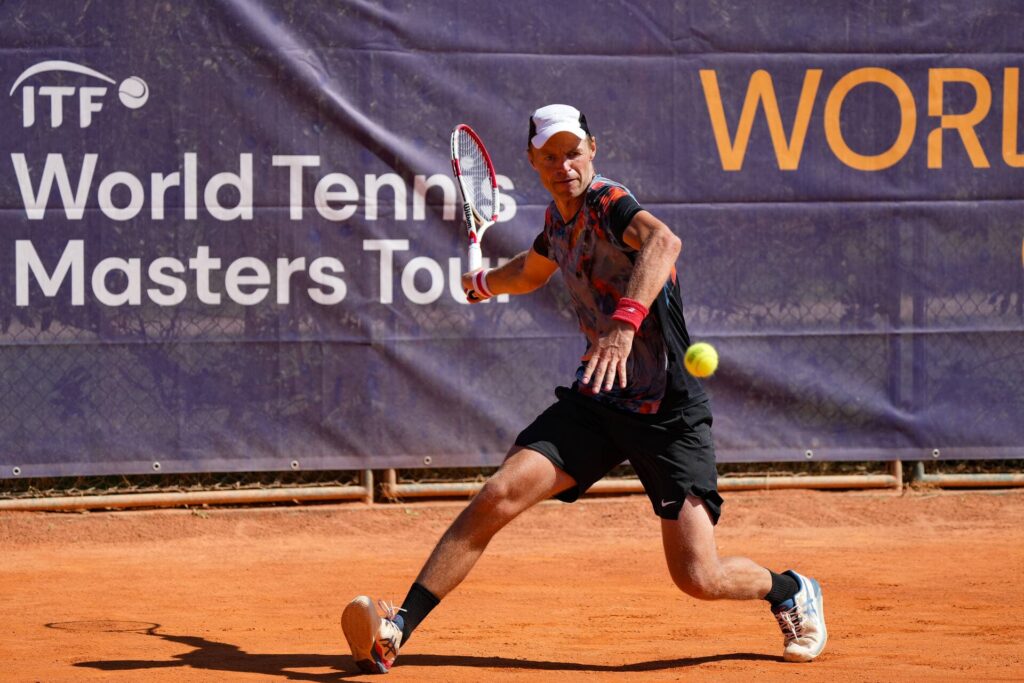
Talent Identification
Federations use various techniques to find potential in their particular sports. Coaches and scouts frequently start this process locally by watching athletes in youth programs, school contests, and local tournaments. Federations may also conduct talent search programs or talent identification camps to evaluate the abilities and potential of aspiring athletes. Federations find people with outstanding talent, commitment, and potential for future achievement in Padel and tennis through methodical examinations and assessments.
Training Camps
After identifying talent, federations frequently allow gifted athletes to participate in specific training camps or development programs. These camps offer intense training sessions supervised by skilled coaches and trainers and may be hosted at regional or national training facilities. Training camps equip athletes with the knowledge, abilities, and resources necessary to succeed at the greatest levels of competition. They do this by emphasizing the development of technical proficiency, tactical awareness, physical fitness, and mental toughness.
Coaching Certifications
Federations invest in coaching education and certification programs to guarantee that gifted athletes receive top-notch training and direction throughout their growth journey. Coaching qualifications give coaches the know-how, abilities, and methods they need to guide and assist athletes at different phases of their careers. Federations enable coaches to develop talent, maximize performance, and foster an excellence culture in their sports by providing them with best practices and evidence-based coaching approaches.
Financial support
A large financial commitment is frequently needed for talent development through coaching fees, travel costs, equipment purchases, and competition fees. Acknowledging the monetary obstacles gifted athletes could encounter, federations might offer scholarships or other financial assistance to deserving candidates to ease their financial load and expedite their career path. To balance athletic and academic objectives, this support may take money for training costs, tournament participation, access to sports science services, and educational scholarships.
Mentorship and Guidance
Federations offer gifted athletes coaching and guidance to help them manage the opportunities and challenges connected with pursuing a career in tennis or Padel, in addition to technical and financial support. Mentors can be experienced players, coaches, or administrators who can share knowledge, support, and insight from their own experiences in the sport. Athletes who participate in mentoring programs get insightful knowledge about the difficulties of elite competition, the value of resilience and tenacity, and the strategies for long-term success in their sports activities.
Standardization and Regulation
Rules and Regulations
Federations play a crucial role in guaranteeing the fairness, consistency, and integrity of competition formats in sports such as Padel and tennis by creating and upholding rules and regulations. Let’s look at how federations create and amend these sports’ regulations, guarantee fair play, and harmonize competition structures around the world:
Rule Establishment and Updates
The responsibility for establishing and improving the tennis and Padel regulations falls on federations like the International Tennis Federation (ITF) and the International Padel Federation (FIP). These regulations include various gaming-related topics, including scoring structures, court sizes, equipment requirements, player behavior, and officiating procedures. Federations work with expert groups of officials, players, coaches, and other interested parties to analyze the current rules, discuss new ones, and suggest changes to improve the rules’ coherence, applicability, and clarity in light of the changing sports landscape.
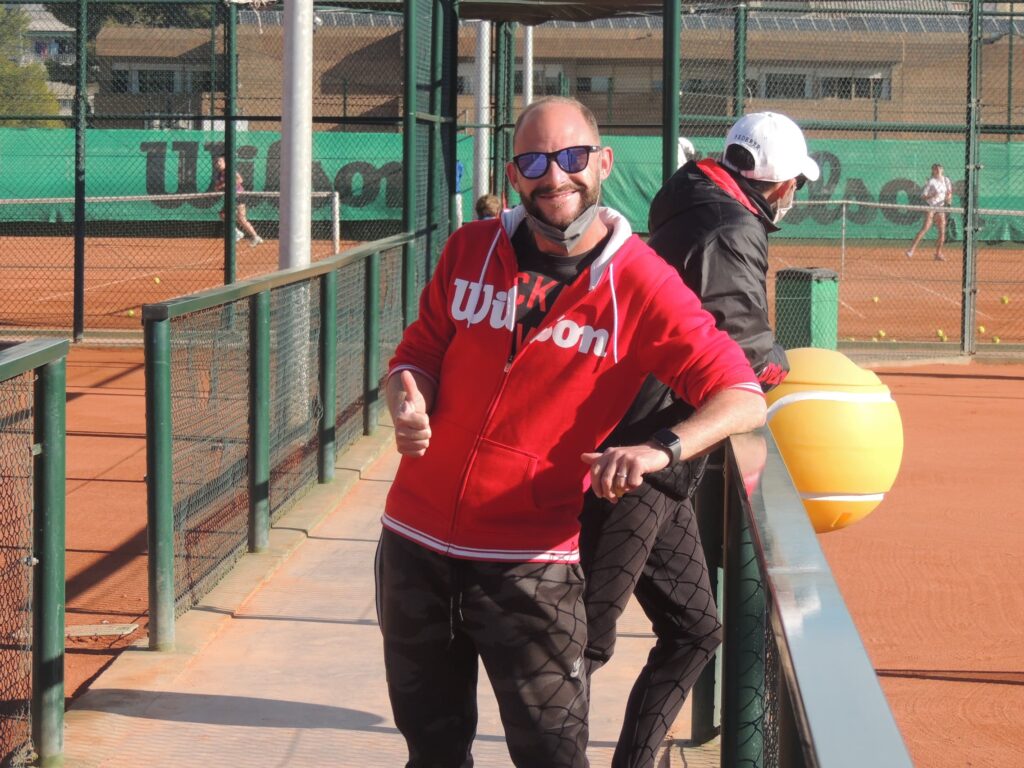
Ensuring Fair Play
In tennis and Padel, federations are essential to maintaining the values of fair play and sportsmanship. They set rules to stop unfair advantages, like bans on doping, match-fixing, and unsportsmanlike behavior. Additionally, federations put in place measures to enforce these rules, including guidelines for anti-doping testing, disciplinary actions, and penalties for infractions. Federations protect the legitimacy and image of sports while establishing an environment of justice and respect for one another both on and off the court by encouraging athletes to act morally and with integrity.
Standardizing Competition Formats
To establish uniformity and comparability throughout competitions and events worldwide, federations strive to standardize competition formats and structures. This includes creating scheduling, seeding, qualification requirements, and tournament operation rules. To facilitate seamless inclusion into the international competition calendar, federations also work with event organizers to verify compliance with international standards and regulations. Standardized competition formats allow players to move between events easily, encourage fan interaction, and improve the overall viewer experience by encouraging familiarity and predictability.

Global Harmonization
To foster consistency and unity in the management of tennis and Padel across various areas and jurisdictions, federations work toward worldwide harmonization of laws and regulations. Distributing and applying uniform rules and regulations consistently entails interacting with national federations, stakeholders, and related organizations. To ensure that players, coaches, officials, and administrators know the most recent interpretations and modifications to the rules, federations may also organize training sessions and workshops. This will help to ensure that the rules are applied consistently and fairly at all levels of the sport. To sum up, federations are essential to creating, maintaining, and applying laws and policies that guarantee the honesty, equity, and uniformity of tennis and padel competition formats. Federations preserve the values of fair play, protect the integrity of the sports, and improve the general standard and competitiveness of tennis and Padel on the world stage by working with stakeholders, monitoring compliance, and advocating for global harmonization.
Equipment and Facilities Standards
Federations significantly influence shaping equipment specifications and facility standards in sports like tennis and Padel to ensure safety, fairness, and optimal playing conditions. Let’s delve into the analysis of how federations influence these aspects:
Equipment Specifications
Equipment specifications for tennis rackets, balls, court surfaces, and other necessary gear are established and regulated by federations, such as the International Tennis Federation (ITF) and the International Padel Federation (FIP). These rules guarantee players’ safety, consistency in performance, and equity at all competitive levels.
• Safety: Federations set standards for equipment safety to minimize the risk of injury to players. For example, tennis racquet specifications may include size, weight, and string tension guidelines to prevent hazards such as excessive strain on players’ arms and shoulders.
• Performance Consistency: Federations set equipment standards to ensure uniform performance characteristics and fair play for all players. By defining parameters for ball bounce height, court surface friction, and racket rebound qualities, federations reduce the benefits of equipment variances.
• Fairness: Federations regulate equipment specifications to prevent unfair advantages from technological advancements and innovations. By setting limits on racquet dimensions, material compositions, and technological enhancements, federations promote fair competition and preserve the integrity of the sport.
• Facility Standards: Federations also impact facility requirements, ensuring that padel and tennis courts offer players a safe, equitable, and appropriate playing surface. These guidelines address surface materials, lighting, amenities, and court dimensions to improve the playing experience.
• Safety: Federations set rules for the building and upkeep of courts to reduce safety risks like uneven surfaces, poor lighting, or slick conditions. Federations also reduce the possibility of player injuries resulting from mishaps or environmental conditions by establishing regulations concerning surface traction, fencing height, and court drainage.
• Fairness: To guarantee consistency and uniformity across venues, federations establish court size and surface materials standards. Federations encourage fairness by giving athletes uniform playing conditions regardless of the competition site by defining court dimensions, surface friction levels, and net height.
• Player experience: Federations ensure players are comfortable and satisfied by setting facility criteria, including seats, shade, and restrooms. Federations ensure that venues are comfortable and convenient enough to encourage players to participate in the sport and improve the overall player experience.
Organizing Competitions
Domestic Tournaments
National federations are essential in setting up leagues and competitions that give players of all skill levels a chance to compete inside their nations. The foundation of the sport is made up of these domestic tournaments, which provide opportunities for grassroots involvement, community service, and player development. Let’s review the general procedures used by national federations to host domestic competitions:
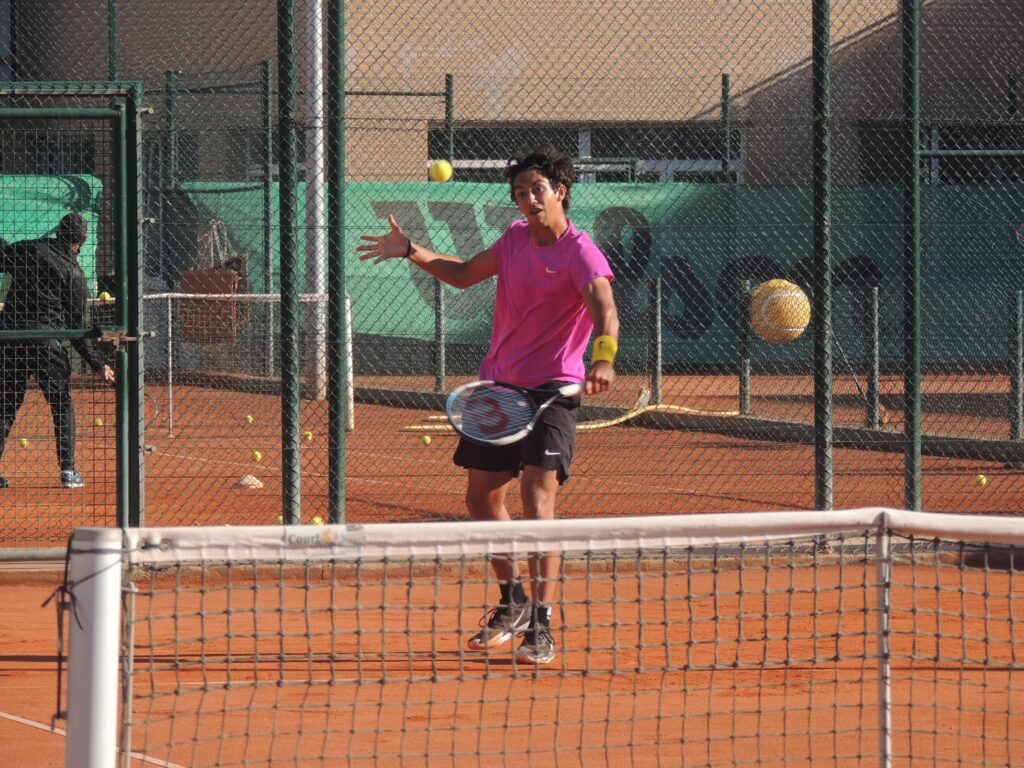
League Structures
League frameworks offering players national federations frequently establish year-round competition chances. These leagues enable participants to compete against rivals who share their interests and skill levels. They can be structured according to age groupings, skill levels, or geographic areas. Regular season games are usually followed by playoff or championship tournaments in leagues to identify victors and award exceptional play.
Tournament Circuit
To accommodate players’ interests and preferences, national federations also host various tournaments in various formats and categories in addition to leagues. These competitions could have age-specific divisions like juniors, seniors, veterans, singles, and mixed doubles events. National federations work with local clubs, venues, and event planners to hold competitions in different places, ensuring players from different backgrounds can participate.
Junior Development Programs
National federations prioritize developing young talent through organized junior development programs that feature events and contests catered to junior players’ requirements. These initiatives allow young athletes to advance, hone their skills, and obtain competitive experience. Junior tournaments may include age-specific categories, coaching support, and routes to national and international events to develop the next generation of best players.
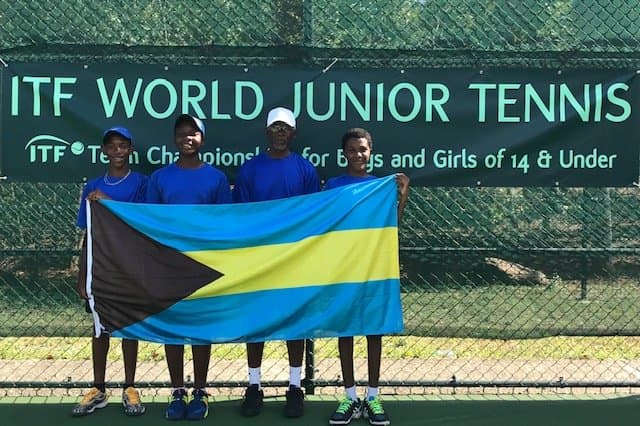
Grassroots Initiatives
National federations carry out grassroots programs designed to attract new players to the game and encourage casual involvement. These programs could include social leagues that draw players of all ages and ability levels, enjoyable events, and competitions appropriate for beginners. National federations promote more involvement in tennis and Padel by establishing friendly and inclusive conditions, creating a lively and diverse community of players.
Ranking Systems and Recognition
National federations frequently use ranking systems to monitor player performance and honor victories in home competitions. Points obtained from league standings, tournament outcomes, or attendance at authorized events may be the basis for these ranking systems. National federations construct clear, merit-based ranking systems that provide athletes with measurable objectives to aim for and motivation to perform at their highest level. National Federations play a crucial role in organizing domestic tournaments and competitions to provide competitive opportunities for players of all levels in tennis and Padel. Through establishing league structures, tournament circuits, junior development programs, grassroots initiatives, and ranking systems, national federations create pathways for player development, community engagement, and the overall growth of the sports within their respective countries.
International championships International championships such as the Davis Cup, Fed Cup, and World Padel Championships serve as flagship events in the tennis and padel calendars, showcasing the highest level of competition and bringing together elite athletes worldwide. Let’s discuss the role of international federations in hosting these prestigious championships.
Davis Cup
The International Tennis Federation (ITF) hosts the Davis Cup, the top men’s tennis team international championship. National teams participate in several rounds of a knockout format, with a final event as the crowning event. To hold Davis Cup ties, the ITF works with participating countries, offering guidance and assistance with venue selection, planning, and event administration. The International Tennis Federation (ITF) raises the profile of men’s tennis internationally and fosters national pride, international fraternity, and global interest in the sport by staging the Davis Cup.
Fed Cup
The corresponding team competition for women’s tennis is the Fed Cup, run by the International Tennis Federation (ITF). National teams play against each other like the Davis Cup, with matches occurring worldwide. To ensure that Fed Cup matches are successfully staged, the ITF works with host countries on site selection, scheduling, and marketing initiatives. By hosting the Fed Cup, the ITF can promote gender equity and inclusivity while showcasing women’s tennis, honoring team spirit, and encouraging female athletes to compete at the greatest levels.
World Padel Championships
The International Padel Federation (FIP) is responsible for organizing the World Padel Championships, the highest level of international Padel competition. Men’s, women’s, and mixed doubles competitions feature national teams from all over the world, with the host country chosen through a bidding procedure run by the FIP. In close collaboration with the host organizers, the FIP manages the organization, scheduling, and implementation of the championships, ensuring adherence to global norms and laws. By hosting the World Padel Championships, the FIP can highlight the vibrant and quickly expanding sport of Padel, encourage international cooperation and interchange between players and federations, and promote global participation.
In conclusion, international federations are vital to hosting important competitions such as the World Padel Championships, Fed Cup, and Davis Cup. They act as global representatives for Padel and tennis and as stewards of the sports. International federations hosting these important tournaments encourage athletes to compete with excellence, good sportsmanship, and togetherness. This inspires supporters worldwide and propels tennis and padel tennis’ continuous rise to prominence as truly global sports. Global Expansion and Collaboration.
Promoting International Growth
The international federations of tennis and Padel use a variety of tactics to encourage the development of these sports in non-traditional markets. By doing so, they can reach a wider audience and foster new areas of interest and involvement. These tactics include joint ventures with regional sports associations, creative advertising campaigns, community-based learning projects, and focused public relations campaigns. Let’s examine some tactics federations employ to advertise Padel and tennis in unconventional markets.
Partnership with Local Sports Organizations
International federations work with regional sports organizations, clubs, and associations in non-traditional areas to introduce and expand tennis and Padel. These collaborations could entail group projects like clinics, competition planning, coaching and training supplies, and sports infrastructure development. Federations can use partner organizations’ local experience, networks, and resources to open new markets, interact with local populations, and encourage grassroots engagement in Padel and tennis.
Grassroots Development Programs
To introduce new players to tennis and Padel and develop talent from the grassroots level, federations operate grassroots development programs customized to non-traditional markets’ unique requirements and preferences. School clinics, youth outreach programs, neighborhood get-togethers, and entry-level competitions that draw people of all ages and backgrounds are a few examples of these activities. Federations create a pipeline of players and enthusiasts by investing in grassroots development, which lays the groundwork for the long-term growth and sustainability of sports in emerging markets.
Marketing and Promotion
Federations use focused marketing and promotional activities to create interest and exposure in tennis and Padel among audiences in non-traditional markets. These campaigns may use digital platforms, social media channels, and traditional media outlets to engage with potential participants and followers and target various demographics. Through engaging storytelling and content development, federations showcase the thrill and competition of tennis and Padel while emphasizing the sports’ accessibility, inclusivity, and health advantages.
Talent Identification and Support
Federations prioritize finding and developing talent in non-traditional markets by allowing gifted athletes to advance their careers and compete on a regional, national, and worldwide scale. Talent development paths, scouting activities, and talent identification programs assist in identifying and fostering gifted individuals by giving them access to competitive opportunities, training facilities, and coaching. Federations promote diversity and representation by investing in talent from non-traditional markets, diversifying the talent pool, and enhancing the tennis and padel worldwide scene.
Educational Initiatives
Federations provide instructional programs to improve the knowledge, abilities, and comprehension of coaches, officials, administrators, and volunteers in non-traditional markets. Participants in coaching certification programs, officiating courses, and administrative workshops are equipped with the skills and knowledge needed to assist the growth and development of sports in their local communities. Federations create capacity and sustainability in non-traditional markets by providing training and education to local stakeholders, encouraging a culture of professionalism and quality in Padel and tennis.
Cross-Federation Collaborations
International outreach and development initiatives are greatly aided by cooperation between the federations of tennis and Padel and other sports organizations. Federations may grow and succeed together, reach new audiences, and increase their impact by utilizing common resources, knowledge, and networks. Here are a few instances of cross-federation cooperation in the growth and advancement of Padel and tennis:
International Tennis Federation (ITF) and International Radel Federation (FIP)
The ITF and FIP work together to advance the international development of Padel and tennis. This collaboration entails exchanging best practices, planning joint activities, and developing projects to increase participation and raise standards in both sports. Together, the ITF and FIP may take advantage of their advantages to increase the popularity and reach of Padel and tennis, especially in areas where one sport may be more well-established than the other.
Joint Events and Competitions
Padel and tennis federations periodically collaborate to host contests and events highlighting the complementing qualities of both sports and draw competitors and spectators from both areas. For example, exhibits, including exhibition matches, Padel, and tennis demonstrations, have been staged to encourage cross-sport involvement and awareness. These gatherings promote cooperation and unity amongst federations while allowing participants, spectators, and other stakeholders to enjoy the thrill and variety of racquet sports.
Partnerships with Multi-Sport Organizations
The International Olympic Committee (IOC) and the Association of Summer Olympic International Federations (ASOIF) are two multi-sport organizations that frequently work with tennis and padel federations to promote and include racquet sports in the Olympic program and other important multi-sport events. Federations can impact decision-makers and raise their profile by coordinating their resources and advocacy efforts with larger sports movements. This will help to promote the development and international recognition of Padel and tennis.
Grassroots Development Initiatives
The grassroots development activities of the tennis and padel federations are carried out in partnership with other sports organizations, educational institutions, and community organizations to bring racquet sports to a wider audience and develop young talent. These relationships could be in the form of cooperative youth programs, school partnerships, or community outreach initiatives that support social inclusion, active lifestyles, and lifetime sports involvement. By combining their resources and knowledge, Federations can enhance the effectiveness of grassroots development initiatives and establish enduring routes for the global expansion of Padel and tennis.
Research and Innovation
Tennis and Padel federations work with academic institutions, sports science associations, and technology firms to promote research and innovation in equipment design, performance analysis, and injury prevention. These partnerships could create fresh coaching approaches, training plans, and technology advancements that improve players’ pleasure, performance, and safety in both sports. Federations can ensure the development and evolution of tennis and Padel and their competitiveness in the global sports arena by cultivating a culture of innovation and cooperation. By working together, federations can leverage their collective resources, expertise, and networks to promote the growth, inclusivity, and sustainability of tennis and Padel worldwide, ultimately enriching the lives of participants and fans across diverse communities and cultures.
Challenges and Controversies
Governance Challenges
Federations frequently deal with serious governance issues that can undermine their efficacy and damage their reputation despite playing a crucial role in supervising sports and directing their growth. External elements like corruption, disagreements over decisions, public scrutiny, and internal problems like governance frameworks and decision-making procedures could cause these difficulties. Now, let’s talk about some of the major governance issues federations face
Governance Structures and Transparency
Numerous federations struggle with opaque, unaccountable, and democratically unsound government arrangements. Certain federations might be led by seasoned officials who oppose accountability and change, or tiny, opaque decision-making bodies might run them. Allegations of nepotism, favoritism, and power abuse can arise from opaque decision-making processes, eroding federations’ legitimacy and fostering mistrust among stakeholders.
Corruption and Ethical Misconduct
Corruption and unethical behavior seriously threaten Federations’ integrity and reputation. Incidents of embezzlement, fraud, and bribery can damage federations’ reputations and reduce public confidence in the sports they oversee. Wide-ranging repercussions from corruption scandals might include regulatory body punishments, lost sponsorship opportunities, and harm to the sport’s reputation. To prevent and deal with corruption inside their organizations, federations must implement strong anti-corruption measures, independent supervision procedures, and ethical codes of conduct.
Controversies over Decisions
Controversies about rules and regulations, competition formats, hosting events, and governance reforms are commonplace in federations. Athletes, coaches, and member associations are examples of stakeholders with whom federations may disagree over perceived injustice, inconsistent practices, or an absence of input during the decision-making process. Careful communication, mediation, and resolution techniques are needed to lessen the impact of controversial choices. Controversial decisions have the potential to spiral out of control and turn into PR disasters, court cases, and challenges to authority and legitimacy.
Lack of Diversity and Inclusivity
Issues of inclusivity and diversity in leadership roles, decision-making bodies, and governance structures plague many federations. Barriers to membership and representation within federations may affect women, minorities, and underrepresented groups, limiting their ability to raise concerns and shape the policies and direction of the sport. To guarantee that various viewpoints are represented in decision-making processes and that all stakeholders have equal opportunity, federations must prioritize efforts to promote diversity, equity, and inclusion by implementing policies and initiatives.
Public Scrutiny and Accountability
In the age of social media and digital communication, federations are subject to significant public and media scrutiny. Stakeholders, supporters, and members of the public scrutinize and critique every decision, action, and comment made by federations. Errors, disputes, or alleged shortcomings in the administration of affairs can swiftly intensify into PR disasters, undermining federations’ credibility and reputation. To address public concerns, establish confidence, and uphold their legitimacy as governing bodies, federations must prioritize accountability, openness, and proactive communication. To sum up, federations’ efficacy and legitimacy are seriously threatened by governance problems like lack of diversity and inclusivity, corruption, concerns with transparency, and disagreements over decisions. Cooperation with stakeholders, regulatory agencies, and civil society organizations is necessary to address these issues and advance transparency, accountability, and integrity within the sports governance ecosystem. Ethical leadership, democratic principles, and good governance practices are also essential. By taking on these difficulties head-on, federations can only fulfill their responsibility to act in the best interests of the communities they represent and the sports they oversee.
Balancing Commercial and Development Goals
Federations must always balance their developmental roles in establishing and promoting sports like Padel and tennis and their economic interests. The development of talent, grassroots projects, accessibility, and inclusivity are among the developmental duties federations must prioritize, even as commercial partnerships and sponsorships are crucial for earning money and maintaining the expansion of the sports. Nonetheless, pursuing business interests may occasionally clash with these aspirations for progress, creating difficulties and conflicts for federations. Let’s examine some major problems federations encounter when balancing commercial and developmental objectives.
Sponsorships and Commercial Partnerships
Federations frequently rely on sponsorships and business alliances to bring in money, finance initiatives for program growth, and help with top-tier contests. Although these collaborations might offer much-needed funding, federations must carefully assess the possible effects on their integrity, autonomy, and development priorities. Corporate corporations may have conditions connected to sponsorship agreements, including branding specifications, marketing duties, and decision-making authority. These conditions could make it more difficult for the federation to operate in the sport’s and its participants’ best interests.
Professionalization and Commercialization
Federations of sports like Padel and tennis are under pressure to draw elite players, emphasize elite-level contests, and satisfy the needs of sponsors and broadcasters as these sports get more professionalized and commercialized. However, occasionally, this professionalization emphasis might take precedence over the sport’s growth elements, such as community involvement, youth development, and grassroots involvement. Federations must find a way to balance supporting the highest levels of competition with keeping the sport sustainable, inclusive, and available to players of all ages and skill levels.
Conflict of Interest
When negotiating partnerships with sponsors, business partners, and stakeholders with conflicting agendas, federations may encounter conflicts of interest. Federations might, for instance, be split between the monetary advantages of working with a well-known sponsor and the possible threats to their reputation and integrity if the sponsor’s actions or beliefs conflict with the goals and principles of the federation. Maintaining the federation’s integrity and public trust in the face of conflicts of interest necessitates the implementation of clear ethical norms, transparent decision-making procedures, and methods for identifying and minimizing possible conflicts.
Governance and Accountability
Effective governance structures and accountability systems within federations are necessary to balance developmental and commercial aims and guarantee that decisions are made with the sport’s and its players’ best interests. To manage conflicts of interest, protect the integrity of their decision-making processes, and manage their ties with commercial partners, federations must set up explicit regulations, codes of conduct, and oversight procedures. Open communication and stakeholder involvement are crucial to keep members, supporters, and the larger sports community’s trust and accountability.
Long-term Sustainability
To guarantee the sport’s continuous development and relevance, federations must prioritize sustainability above immediate financial benefit. Building a solid basis for the sport’s future may entail investing in infrastructure, talent routes, and grassroots development, even if doing so means forgoing short-term financial gains or business prospects. By adopting a strategic and comprehensive approach to balancing commercial and developmental goals, federations may promote a robust and healthy sports ecosystem that benefits all parties involved, from amateur players to professional athletes and sponsors. Federations must help balance their developmental responsibilities for growing and promoting sports like Padel with their economic interests. By taking a moral and strategic approach to managing sponsorships, professionalization, conflicts of interest, governance, and sustainability, Federations can effectively navigate these challenges and uphold their commitment to advancing the sport’s interests and values for all stakeholders. In summary, national and worldwide federations are essential to the growth and development of tennis and Padel globally because they provide the framework for their management, promotion, and governance.
This article has discussed federations’ various roles, including creating policies and guidelines, planning events, encouraging grassroots involvement, and promoting cross-border cooperation. National federations lay the foundation for the development of sports in their nations. They are at the forefront of developing talent, supplying facilities, and planning domestic competitions. Meanwhile, international federations lead initiatives to promote sports globally, establish regulations, and organize international contests, encouraging rivalry and friendship among participants everywhere. These organizations are still evolving due to cultural shifts, technological advancements, and changing dynamics in the sports sector.
Federations can influence the course of tennis and Padel going forward by fostering innovation, diversity, and sustainability throughout the sports industry as they respond to these opportunities and challenges. To secure the long-term growth and relevance of tennis and Padel, federations must continue prioritizing the development of grassroots involvement, talent discovery, and diversity and inclusion efforts. Federations may successfully manage the challenges of striking a balance between their developmental responsibilities and economic interests by embracing transparency, accountability, and stakeholder involvement. This allows them to cultivate a thriving, diverse sports community that improves the lives of athletes and spectators everywhere. In conclusion, national and worldwide federations play a crucial role in developing tennis and Padel, influencing the sports’ present and future with their commitment, vision, and leadership. These organizations will significantly influence sports as they develop, fostering innovation, quality, and accessibility for future generations.






